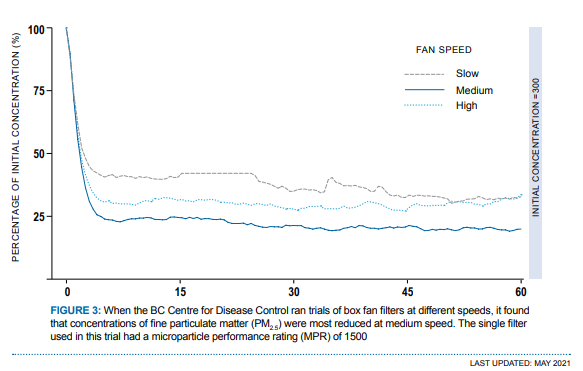Following the British Columbia Centre for Disease Control’s warning of what could be a smoke-filled summer, the health organization has worked with the University of British Columbia to create a device to protect lungs across the province.
While no alerts concerning smoky skies have been made yet for Metro Vancouver, the BCCDC recommends taking a proactive approach. With the near-complete destruction of the interior B.C. town of Lytton by wildfire and Kamloops escaping a similar fate, experts with the BCCDC say there is no reason to expect this summer won’t be a smoky one. The fine particles of said smoke pose a danger to those with asthma, COPD, heart disease, diabetes, pregnant people, infants and children, and older adults.
No filter? No problem.
Seeing as there was very little scientific evidence on the effectiveness of box fan filters, the BCCDC recognized the need for more information before recommending them across the province. As such the partnership between the BCCDC and UBC was born and various designs were tested in a special air pollution booth.
Here’s what you’ll need to make the two types of air filters:
- One 20” x 20” box fan
- One or two 20” x 20” high-efficiency filters, preferably MERV 13 (FPR 10 or MPR1500-1900) or higher
- Tape
- Marker
- Cardboard and scissors
Directions for a double box fan filter:
- Cut two triangles out of cardboard with each side measuring 21” and each angle measuring 60 degrees
- Tape the two filters to one triangle and the bottoms to the other triangle. Make sure the arrows on the edges of the filters point to the inside of the triangle where the fan will go.
- Lightly tape both filters and triangles to the back of the box fan - using a lot of tape will put more strain on the fan motor
Directions for a single box fan filter:
- Align the filter against the back of the fan
- Turn the filter so that the arrows marked on the edges of the filter faces the same diffraction as the arrow drawn on the fan
- Lightly tape both filters and triangles to the back of the box fan - using a lot of tape will put more strain on the fan motor
 UBC researchers found that a fan on medium speed pushing air through high-quality filters worked best. By British Columbia Centre for Disease Control
UBC researchers found that a fan on medium speed pushing air through high-quality filters worked best. By British Columbia Centre for Disease ControlFor more detailed instructions you can check out the document released by the BCCDC.
The researchers found that a fan on medium speed pushing air through high-quality filters worked best. Additionally, these box fan filters work better when used in a small room, kept turned on for at least 15 minutes, and doors and windows remain closed.
The BCCDC noted there is no clear guidance on when it is necessary to change filters on homemade filters. Additionally, box fans are not designed to operate with a filter and the single filter design was found to increase the motor temperature by about 2 degrees celsius.
The BCCDC recommends that if you choose to make and use a box fan filter, do not leave the fan running unattended, run the fan at high speed or block the back or the front of the fan.




